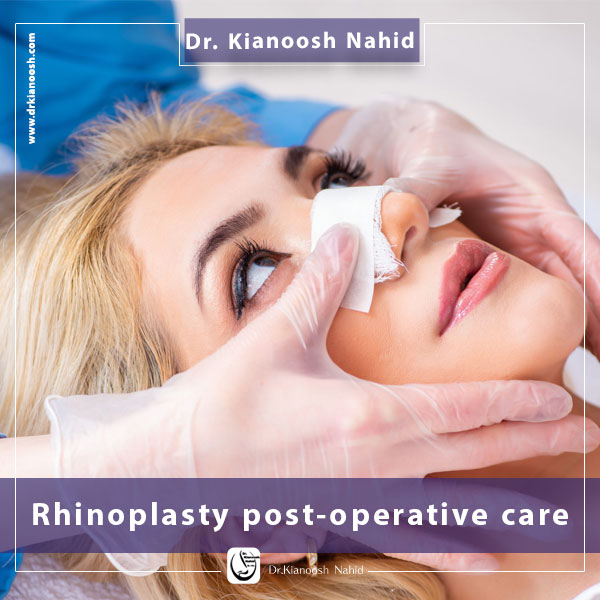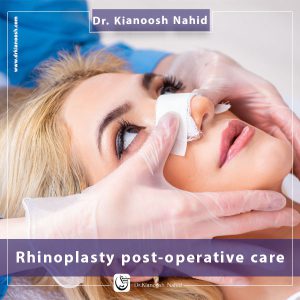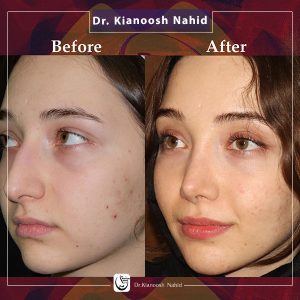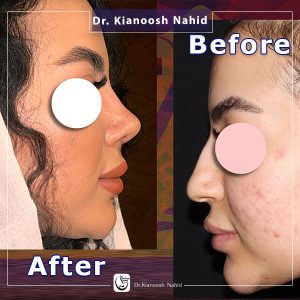Congratulations on taking the step towards your desired facial transformation through rhinoplasty! While the surgery itself marks a significant milestone, the journey doesn’t end there. Rhinoplasty post-operative care is crucial for optimal healing and achieving the best possible results from your rhinoplasty procedure.

Immediate Post-Operative Period:
- Rest: Plan to rest for the first week following surgery. Avoid physical and strenuous activities or bending over and keep your head elevated to reduce swelling.
- Ice Packs: Apply ice packs to your nose and surrounding areas to minimize swelling and discomfort. Use a cloth or towel to protect your skin and avoid direct contact with the ice.
- Medical Management: Take prescribed antibiotics and pain medication as directed. Avoid aspirin, Diclofenac and other blood-thinning medications unless advised otherwise.
General Care
Nasal Dressing: Your surgeon has placed internal and external dressings or splints to support the nasal structure. Follow these instructions for care and removal of these dressings:
- Internal dressing: to be removed in 3 days post op.
- External cast and sutures: to be removed in 7 days post op.
Cleaning and maintenance: Gently clean the outside of your nose with an alcohol swab and wet tissue. After removal of the internal dressing, you should start washing inside your nose with Saline solution flushed inside the nose by a 10 cc Syringe, 3 to 5 times a day. Irrigation should continue for 3 months.
Apply antibiotic ointment on the nasal sutures 3 times a day with a cotton swab. This should be continued until the sutures are removed a week after
surgery.
Other Rhinoplasty Post-Operative:
- Duration of nasal taping after surgery varies depending on the type of nasal operation, the surgeon’s preference, and statistical studies. In our service, complete taping is recommended for at least three weeks up to one month, ideally at the clinic by an experienced physician or staff. After this period, the patient can use the nasal tip taping for up to approximately two more months.
- Post-operative recovery varies among different individuals and usually does not follow a linear trajectory. It’s not necessarily progressive daily; immediately after removing the cast, the nose swells and may remain swollen for months. However, in noses with thin skin, the resolution might be quicker. Generally, in the second month after the operation, the middle part of the nose goes down slightly, while after six months, the swelling of the tip and upper part of the nose regains its proper shape. Initially, the nasal tip may appear larger and gradually decreases in size.
- Every surgical procedure may encounter complications and might require corrective surgery. This probability is higher for fleshy noses, severe deviations, or specific deformities like large or droopy tips.
- This surgery is not covered by insurance policies.
- Swelling around the eyes is expected after rhinoplasty and may or may not be accompanied by bruising, usually subsiding within a few days.
- The nasal tip might seem higher than reality under the cast.
- Foul odor inside the nose, usually experienced from the first to the third month, is related to the absorption of suture threads or dried secretions, often self-resolving with regular nasal cleaning.
- During the first three months after the operation, absorbable sutures inside the nose may fall out.
- The nasal tip might slightly descend in the months following the operation.
- Massaging the bony part of the nose during the first month after the operation might prevent its re-expansion. Instructions for performing this will be provided if necessary.
- Local cortisone injections can reduce fleshy protrusions on the upper part of the nose. Common side effects include asymmetric skin thinning or pigment loss at the injection site.
- Usually, the results of the operation become apparent after one year. For fleshy noses, this time may be even longer, up to several years. The extended duration is due to the gradual process of skin and mucosal swelling reduction and cartilage settling.
- It is advised to sleep on the back for at least three months after the operation, preferably longer, to minimize the risk of nasal deviation or mechanical injury to the freshly operated nose.
- Light exercise, such as walking, is allowed up to three weeks after the operation, while heavy non-competitive exercises are prohibited for six weeks to two months after the operation.
The likelihood of these cases is high:
- Eye swelling for a few days
- Bruising around the eyes or even intraocular bleeding, improving within one to two weeks
- Nasal bleeding with clotted blood for up to one week
- Partial respiratory obstruction for one to two months
- Asymmetry and swelling: six months to one year
The probability of these occurrences is very low:
- smelling problem, usually until tampon removal
- Post-nasal skin damage: necrosis or destruction, mainly seen in reconstructive nasal surgeries or smokers/hookah users
- The middle nose septum getting perforated, mostly seen in certain closed rhinoplasty methods where the nasal skin is not cut and nasal mucosa is cut internally in two areas, and sometimes are left without stitches
- Infection at nasal incisions or inside the nose
- Nasal mucosal adhesion
It’s worth mentioning that the occurrence of these complications in our patients has been very rare so far.










